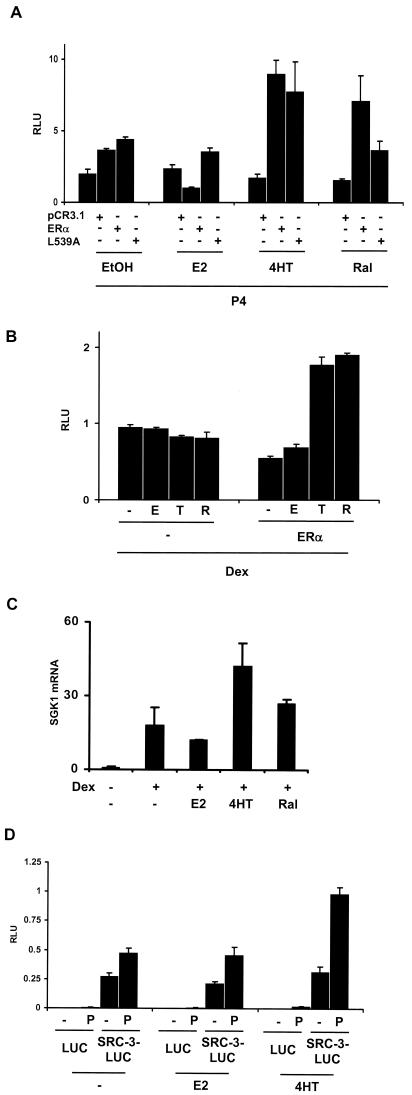FIG.5.
SERMs can potentiate the transcriptional activity of other nuclear hormone receptors. (A) HeLa cells were transfected with a progesterone-responsive reporter (pGRE-E1b-LUC), pCR3.1 hERα L539A, or its vector backbone, pCR3.1 (−), and a PR expression vector (pCR3.1 hPR-B). Twenty-four hours thereafter, the cells were treated with ethanol vehicle (−), E2 (E), 4HT (T), or P4 (P). (B) Cells were transfected with a GR-responsive reporter (pGRE-E1b-LUC) and ERα and then treated with 10−7 M dexamethasone (Dex) and with the ERα ligands listed above. (C) SERM-mediated potentiation of GR-mediated transcription in MCF-7 cells. Untransfected MCF-7 cells were treated with ligands as described above and harvested for total RNA 12 h thereafter. The mRNA for the GR-inducible SGK1 gene was quantitated by real-time quantitative PCR normalized against 18S RNA. (D) Treatment with 4HT promotes increased interaction between PR and SRC-3-LUC in the HeLa cell line. HeLa cells were transfected with pERE-E1b-CAT and expression vectors for ERα, PR-B and SRC-3-LUC. Twenty-four hours thereafter, the cells were treated with E2 or 4HT as indicated. After an additional 24 h, the cells were treated with progesterone (P) for 1 h and then cells were harvested and subjected to immunoprecipitation with an anti-PR antibody. The antibody-associated luciferase (LUC) or SRC-3-LUC protein was detected with a standard luciferase assay.

